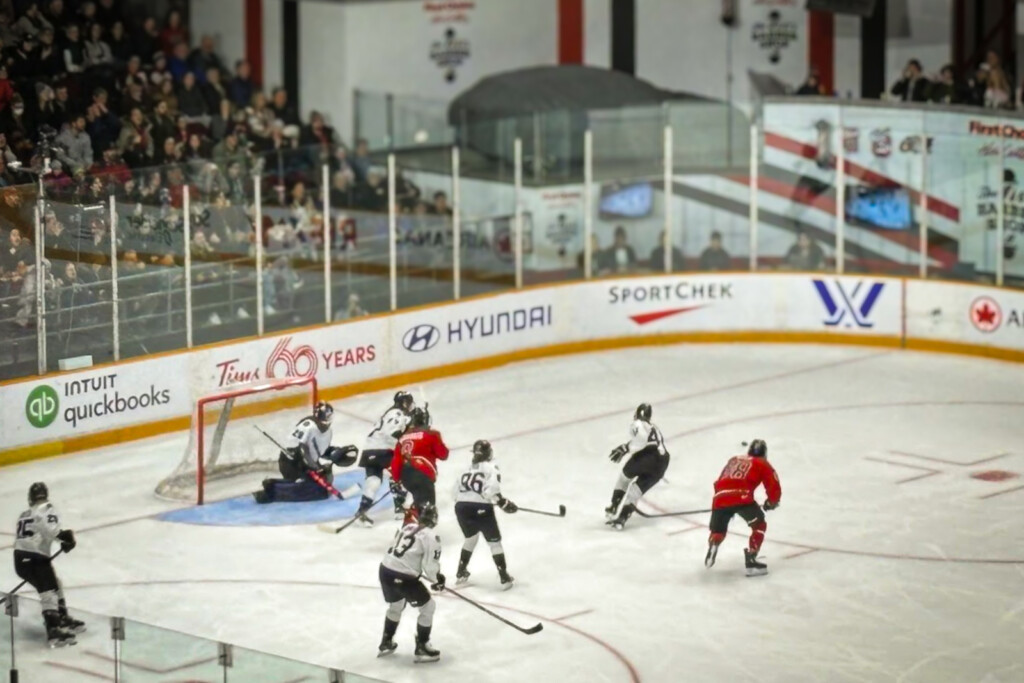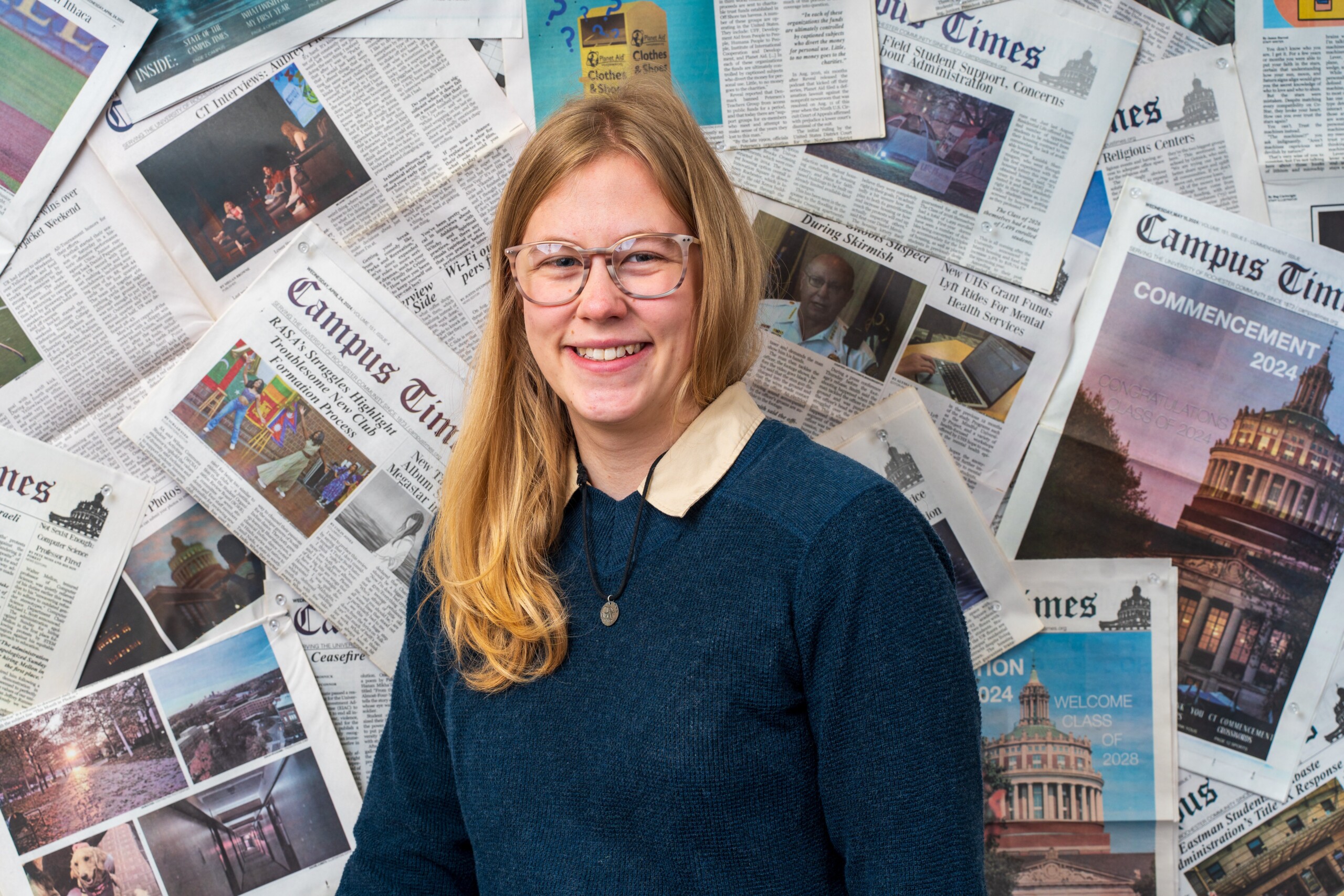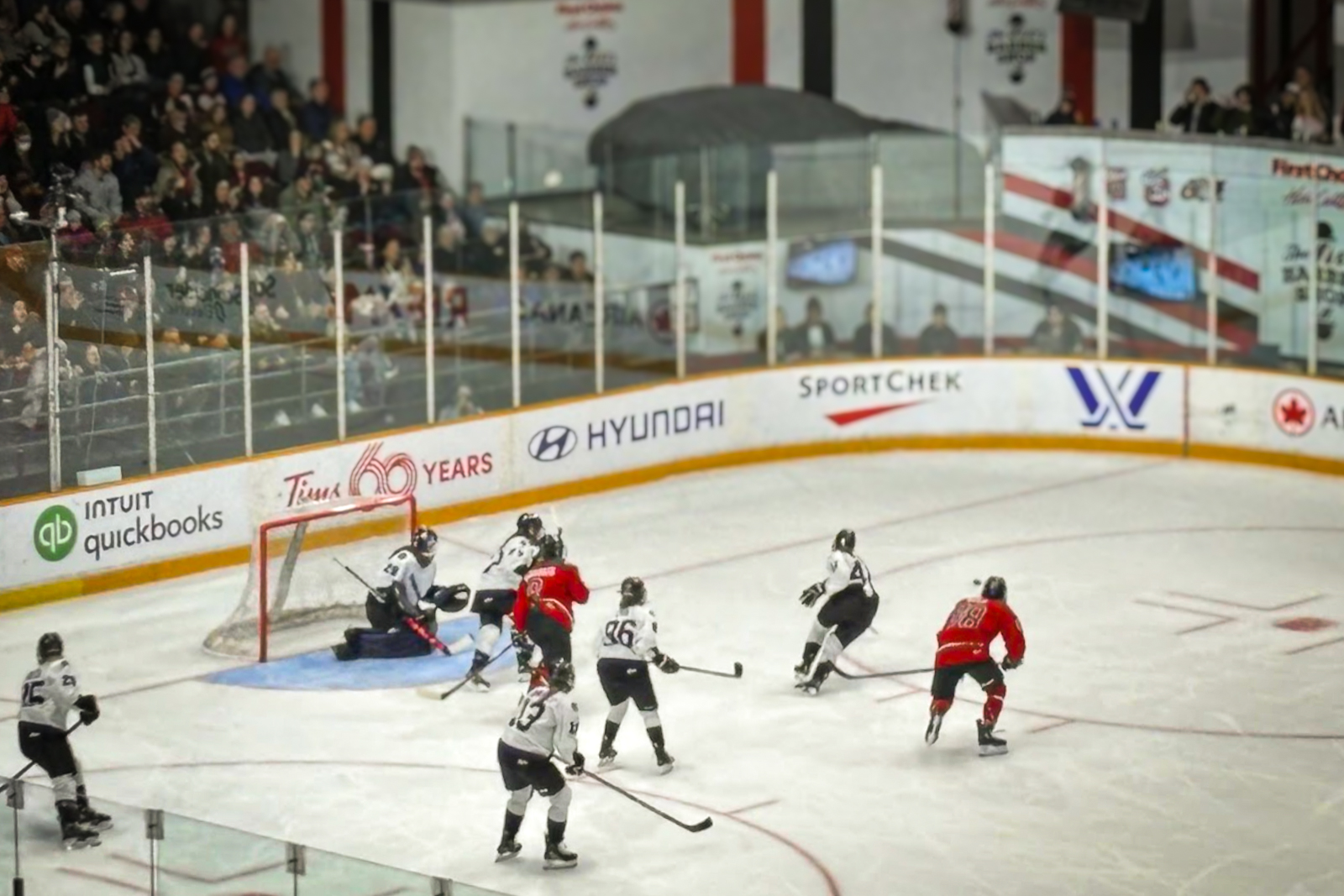On Saturday, Nov. 30, the Professional Women’s Hockey League kicked off their second annual season. The Toronto Scepters’ season began on an exciting note with a 3-1 win over the Boston Fleet. Nov. 30 also marked the first time I actually paid enough attention to know when a sports season started. I’ve never really been someone who enjoys or even understands sports. At least, not until I attended my first PWHL hockey game.
When I was younger, sports games in my life, even on television, were infrequent and overwhelming. By the age of 10, I had gathered that televised sports were mainly an excuse for adults to yell loudly and eat spicy food (I mean, did they think that shouting in their living rooms would actually make the players run faster?) and that live sports events were mainly outings where, if I behaved myself, I could maybe have a little bowl of Dipp’n Dots in a bowl shaped like a baseball hat.
I also never really felt like an odd-one-out for not liking sports. In my brain, what kid would like watching sports? I mean being on an after-school sports team, sure, but watching? As I reached middle and high school, I became utterly confused as I saw more of my peers complaining about the Saturday night game in between class periods. I mean, of all the things to watch on TV, you picked the only one with no plot and no jokes? I was perplexed: When did kids my age start liking sports?
Before last year, the closest I had ever come to the thrill of a true sport-watching experience was in two of the nerdiest ways possible. The first was on the Fourth (well, fifth, technically) of July, 2019. I was a rising junior in high school, and had finally gotten home from watching the town fireworks with my mum. The day before, I had started watching a live-play Dungeons and Dragons show called Fantasy High and I was enraptured. At around three a.m., the intrepid heroes of the show found themselves in the midst of battle with a fearsome winged devil at an abandoned skate park. I was on the edge of my seat, waiting with bated breath for each player’s next move, and whether the dice would allow it. (Hey, I warned you it was nerdy.) That night, for the first time in my life, I was the one shouting at a screen in my living room. I thought to myself, ‘Is this what watching sports is like?’
It was a while before I felt the rush of sports-watching again. Over spring break of my sophomore year, I attended the first live sports event that I actually enjoyed … well, sort of. See, my best friend from high school moved to Chicago for college, and I still hadn’t visited her yet. Over winter break that year, we somehow stumbled across a series of TikToks focused on the American dinner theatre corporation known as Medieval Times. There was a location in Chicago. We had to go.
As soon as you arrive at a Medieval Times “Castle,” the staff assign you and your party to a colored team for your knight. When the show begins, you’re introduced to each knight and you get a chance to see a bit of their personality. And suddenly, you have someone to root for. For someone with a longstanding love-hate (mostly hate) relationship with the United States, there was a lot of pent-up patriotism that surfaced in me that night. It probably also helped that the bar was surprisingly cheap.
That night, with a green banner in hand, I cheered for my knight with all my heart, and once again I thought to myself, ‘Is this why people like sports?’
Flash forward to this past January, a post came up on my feed about a new women’s hockey league that had just begun. The new league was a really interesting experiment — for the first time in women’s hockey history, players were getting paid real wages, meaning that these Olympians and former college athletes would be making enough to not have to work multiple jobs during their seasons. The league was created out of love by famous female athletes such as Jayna Hefford and Billie Jean King so that young female hockey players could have something to aspire to in the way that the boys could with the NHL.
I was still studying abroad at that point, but I knew I was heading home soon. I decided to go out on a limb and text my friend Clara who I’d fallen out of touch with after our first year.
“Hey, I’m not sure if I’m profiling you because you’re Canadian, but do you like hockey?” I texted her. “I saw online that there’s a new women’s league that started this year and I kinda want to see them play in Toronto but I don’t know like, anything, about hockey and I wouldn’t want to go by myself haha”
To my relief, she instantly replied: “Dude oh my god so i’m in LOVE with the new league. i’ve seen every single game and am such a big fan. i’d so love to go with you. tickets are sold out in TO for every game—however I can probably get some for ottawa? That’s my home team actually!”
Just like that, I had my in. It turns out Clara had done her RESEARCH about the league. Through her, I learned about the ways that the league was a reflection on gender studies, how the rules for the inaugural seasons became a sort of test-run for rules people had been aiming to introduce to the NHL for years. On the surface, such rule-changes are probably a good idea (I mean, the fact that the NHL still doesn’t have helmet visors is CRAZY), but on a deeper level, it’s interesting that one of the biggest differences between the PWHL and the NHL is that the women aren’t supposed to fight (also known as “fisticuffs”) on the ice. While men may face a five-minute penalty for fights on the ice, PWHL players face being immediately ejected from the game. And unlike televised NHL games where fights are replayed in slow motion, the PWHL has a policy to cut or redirect cameras the instant a fight breaks out. Is fighting dangerous? Yes. But why are female hockey players automatically expected to play nice?
My favorite part of the league’s principles? They were determined to book only big stadiums. In past attempts at women’s hockey leagues, investors have been hesitant to take the risk of a new league (and a women’s league at that) not selling out a “real” hockey stadium. However, the problem with small stadiums is they draw small crowds. They don’t get as many advertiser deals or TV coverage of games. PWHL knew this, and they wanted to go all in. Last year, the new league proved that people really did want to watch women’s hockey. They just needed to know it existed. Games in all six of the league’s participant cities were sold out more often than not, and attendance overall surpassed all expectations across the season.
In February, Clara and I drove up to watch Ottawa face Minnesota in a home game, and the energy in the stadium was electric. The first thing I noticed as I stepped inside was how many little girls there were. All across the lobby, I saw clusters of girls’ little league teams, girl scout troops, and young families wandering around in both Ottawa’s and their own team jerseys. When we sat down to wait for the game to begin, the jumbotron scrolled through various home-made posters in the stands. Messages from “You give me something to aspire towards” to “Show them what Ottawa’s made of” littered the stands. When the game began, I was mesmerized. Instead of being at the mercy of a TV camera’s lens, I could see the whole field (rink?) at once. As my eyes followed the puck back and forth, the players surrounding it reminded me of a flock of birds or a school of fish. Somehow, wordlessly, they moved like a fluid, never crashing, never taking their eyes off the puck. When Ottawa scored the first goal of the game, the arena erupted in cheers, drowning out the cry of the buzzer.
As strobe lights painted the people in the stands in a sort of vignette of joy and excitement, I was hit by that same feeling one more time. This time I knew. ‘This IS what sports feels like.’ Even though Ottawa lost, that game was one of the highlights of my semester. I can’t wait to see what the new season brings. Oh, and that friend I fell out of touch with? She’s my roommate now. For the next few months, you can catch us in our living room, yelling at the TV.



